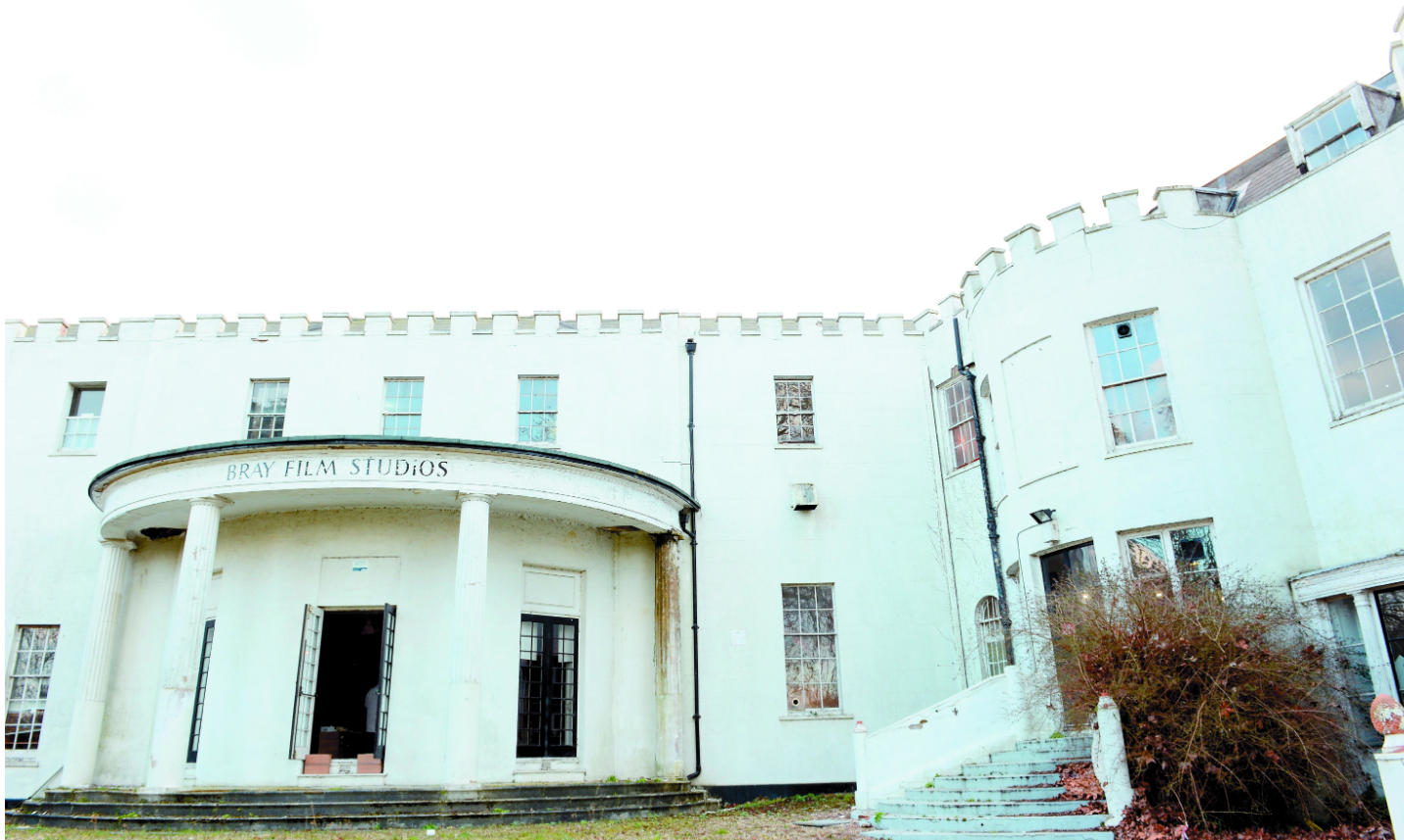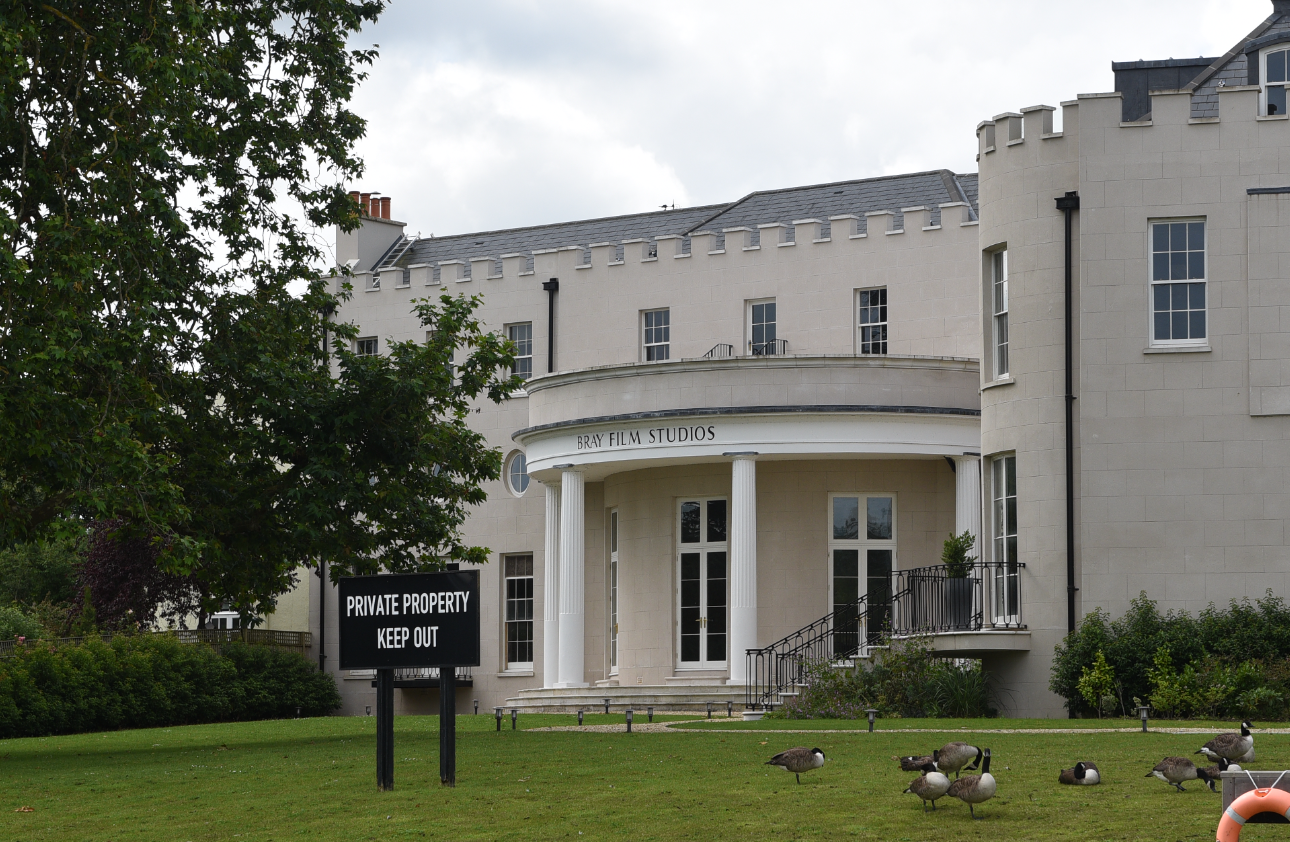

04:57PM, Tuesday 13 August 2024

Bray Film Studios has held a place in the history of British filmmaking' for more than 70 years – but in a sense, its story begins much further back.
At the core of the 3,600sqft studio complex is Down Place, a Georgian building that is still at the heart of Bray Film Studios.
This quiet country house would catch the eye of Hammer Films, which was starting to make some noise in the film industry in the late 1940s.
First, Hammer took on the neighbouring historic house of Oakley Court. It used old country houses as film studios because these were cheap to rent and abundantly available.
Much innovation went into making these old country houses work for film production, says Oakley Court historian and film history buff Jake Roche – Hammer used existing furniture as props and there were stories of bathrooms being used for developing film.
It was in 1951 that Hammer bought the ‘neglected’ Down Place and extended it to make it viable for proper filmmaking, adding s series of stages, film sets and outbuildings.

Down Place, run down, from several years ago.
This move by Hammer marked the beginning of Bray Studios as the ‘home of Hammer’, and its ‘golden era’ through the 1950s and ’60s, when the UK film industry was ‘booming.’
“What made Bray stand out is it was this quirky, tiny country house estate on the Thames, and it became a real powerhouse of British cinema,” said Jake.
The first film made at Bray was Cloudburst, a crime drama. This was followed by a series of thrillers during 1951-1956, culminating in the Quatermass sci-fi horrors.
Harry Malcolm, who runs a film memorabilia event heavily featuring Bray Studios nostalgia, said it went from the ‘new kid on the block’ to garnering fame at pace.
“Bray tapped into something really quickly – the geographical area,” Harry said. “Bray had the option of doing a lot of location shots. It used Maidenhead, Windsor, Slough, Burnham Beeches.”
This made Bray a competitor to the world-renowned Ealing Studios, which was doing Alec Guinness and Peter Sellers films, among other British classics.
In 1957, Hammer embarked on remakes of the classic horror films, bringing forth its enduring reputation for classic, if gruesome (and controversial) horrors.
These included Dracula, Frankenstein and the Wolf Man, mainly starring Christopher Lee and Peter Cushing.
Crew and technicians lived on-site during productions, creating the first ‘house-style’ studio.

Harry Malcolm with film memorabilia from the studio's heyday.
Over the span of two decades, Hammer created a cult genre of more than 100 fantasy and horror films – and by 1968, it had finished filming.
There was still some juice left in Bray studios; The Rocky Horror Picture Show was filmed there in 1974, while Ridley Scott built and shot the miniatures for the Academy-Award-winning Alien there in 1978.
There were also some significant music events. The last rehearsal of the original Led Zeppelin took place at Bray Studios in 1980, while Eric Clapton’s album Unplugged was recorded in front of a live audience there in 1992.
Pink Floyd, Radiohead, David Bowie, Queen and Amy Winehouse are also among the many musicians who have played at the studios.
However, the early to mid-90s nonetheless marked the beginning of Bray Studio’s decline. Films were instead being shot at Pinewood, Shepperton and Elstree by preference.
“Bray was a victim of its time period,” said Jake. “It was successful in the 50s and 60s because it was small, and by the 80s, 90s and early 2000s, it was too small.”
The last tenants left Bray Studios in 2014 and in November the next year, it came perilously close to being turned into housing, after RBWM approved a 25-home scheme.
But the plans never came to pass, allowing the studios a new lease of life in later years.
Harry said: “Bray was being overlooked. It was only in the last 10 to 15 years where Bray then started making noise again.”

Hammer heyday memorabilia on display at Maidenhead heritage centre seven years ago.
Revival
Rising like a Phoenix from the ashes, the new boom in the film and TV industry saw investment starting to rise, reviving Bray Studios and enabling its return to filming in 2017.
Scenes were shot at the old studio buildings for the BBC’s Bodyguard and Dracula – in a tip of the hat to its Hammer history – not to mention the hit Elton John biopic Rocketman in 2019.
Temporary planning permission for new sound stages and workshops was granted in 2020, and this was only the beginning.
In 2021, proposals for an expansion to Bray Studios were approved, including about 750 more parking spaces, giving a feel for the anticipated level of increased activity.
Bray Film Studios did not wait for this expansion to be complete to get the ball rolling. It announced shortly afterwards that Amazon’s Lord of the Rings spin-off, The Rings of Power, was set to be filmed there.
Then in July, Amazon MGM Studios announced it was buying Bray Film Studios.
Following this, it announced that the second season of the Russo Brothers’ spy series Citadel would be the first Amazon MGM Studios production at the site.
Whatever is next in store for Bray Studios, it is an exciting time for its fans. Given the level of investment, Harry expects big things from the revived Bray Film Studios.
Jake said: "They got dangerously close to losing the facility entirely and having it turned into housing. It's had quite the renaissance in the past three or four years.”
The second season of Lord of the Rings: The Rings of Power is set to air on August 29.

Down Place, restored - how it looks today
Most read
Top Articles
All train lines between London Paddington and Reading have closed while emergency services respond to an incident, National Rail has said.
Marks & Spencer (M&S) have revealed plans to close its Maidenhead town centre store and create a new market-style foodhall at Stafferton Way Retail Park.
Police officers were called to the Shell Garage in Burnham Lane shortly before 1.45am on Tuesday following reports a woman had suffered serious injuries.